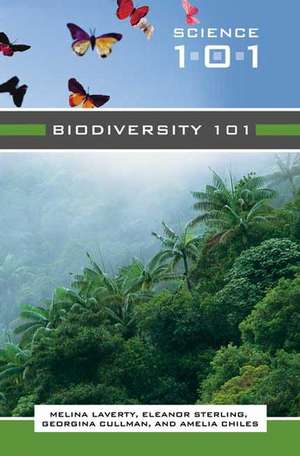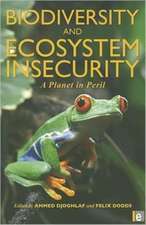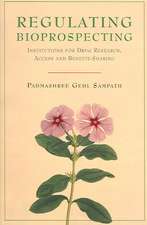Biodiversity 101: Science 101
Autor Melina Laverty, Eleanor Sterling, Amelia Chiles, Georgina Cullmanen Limba Engleză Hardback – 29 oct 2008 – vârsta până la 17 ani
Preț: 235.90 lei
Preț vechi: 408.51 lei
-42% Nou
Puncte Express: 354
Preț estimativ în valută:
45.14€ • 49.02$ • 37.92£
45.14€ • 49.02$ • 37.92£
Carte tipărită la comandă
Livrare economică 22 aprilie-06 mai
Livrare express 15-21 martie pentru 205.30 lei
Preluare comenzi: 021 569.72.76
Specificații
ISBN-13: 9780313341205
ISBN-10: 0313341206
Pagini: 220
Dimensiuni: 156 x 235 x 23 mm
Greutate: 0.45 kg
Editura: Bloomsbury Publishing
Colecția Greenwood
Seria Science 101
Locul publicării:New York, United States
ISBN-10: 0313341206
Pagini: 220
Dimensiuni: 156 x 235 x 23 mm
Greutate: 0.45 kg
Editura: Bloomsbury Publishing
Colecția Greenwood
Seria Science 101
Locul publicării:New York, United States
Notă biografică
MELINA F. LAVERTY is a marine biologist, and former Senior Program Officer at the American Museum of Natural History's Center for Biodiversity and Conservation. She is currently completing her law degree at the University of Toronto.ELEANOR J. STERLING is the Director of the Center for Biodiversity and Conservation at the American Museum of Natural History, as well as the Director of Graduate Studies for the Department of Ecology, Evolution, and Environmental Biology at Columbia University.AMELIA CHILES is a former staff member of the American Museum of Natural History's Center for Biodiversity and Conservation. She now lives in Denver where she works for the Colorado chapter of the U.S. Green Building Council.GEORGINA CULLMAN works in the Center for Biodiversity and Conservation at the American Museum of Natural History.
Cuprins
Series ForewordPrefaceChapter One: What is Biodiversity?Chapter Two: Where is the Worlds Biodiversity?Chapter Three: Why is Biodiversity Important?Chapter IV: The State of the Worlds BiodiversityChapter V. Conserving Biodiversity: Strategies and SolutionsGlossaryBibliography
Recenzii
The series introduces general readers and new science students to the basics of various branches of physical science. The standard format includes simple concepts leading to more complex ones, a glossary without pronunciation, and an annotated bibliography of print and nonprint sources. Here four professionals currently or formerly with the American Museum of Natural History explain what biodiversity is, where in the world it is, why it is important, its status today, and strategies and solutions for conserving it.
This book is an easy-to-read introduction to the science and conservation of biodiversity for general readers or nonmajor students. . . . The authors do an especially good job in such a short volume of avoiding oversimplification and actually embrace the fact that disagreements, ambiguities, and value-laden judgments are inherent within biodiversity science and conservation. . . . This is a good overview for anyone with a vague understanding of biodiversity who wants to know more. It would perhaps make an interesting textbook for a nonmajors course on conservation.
This book is an easy-to-read introduction to the science and conservation of biodiversity for general readers or nonmajor students. . . . The authors do an especially good job in such a short volume of avoiding oversimplification and actually embrace the fact that disagreements, ambiguities, and value-laden judgments are inherent within biodiversity science and conservation. . . . This is a good overview for anyone with a vague understanding of biodiversity who wants to know more. It would perhaps make an interesting textbook for a nonmajors course on conservation.
















